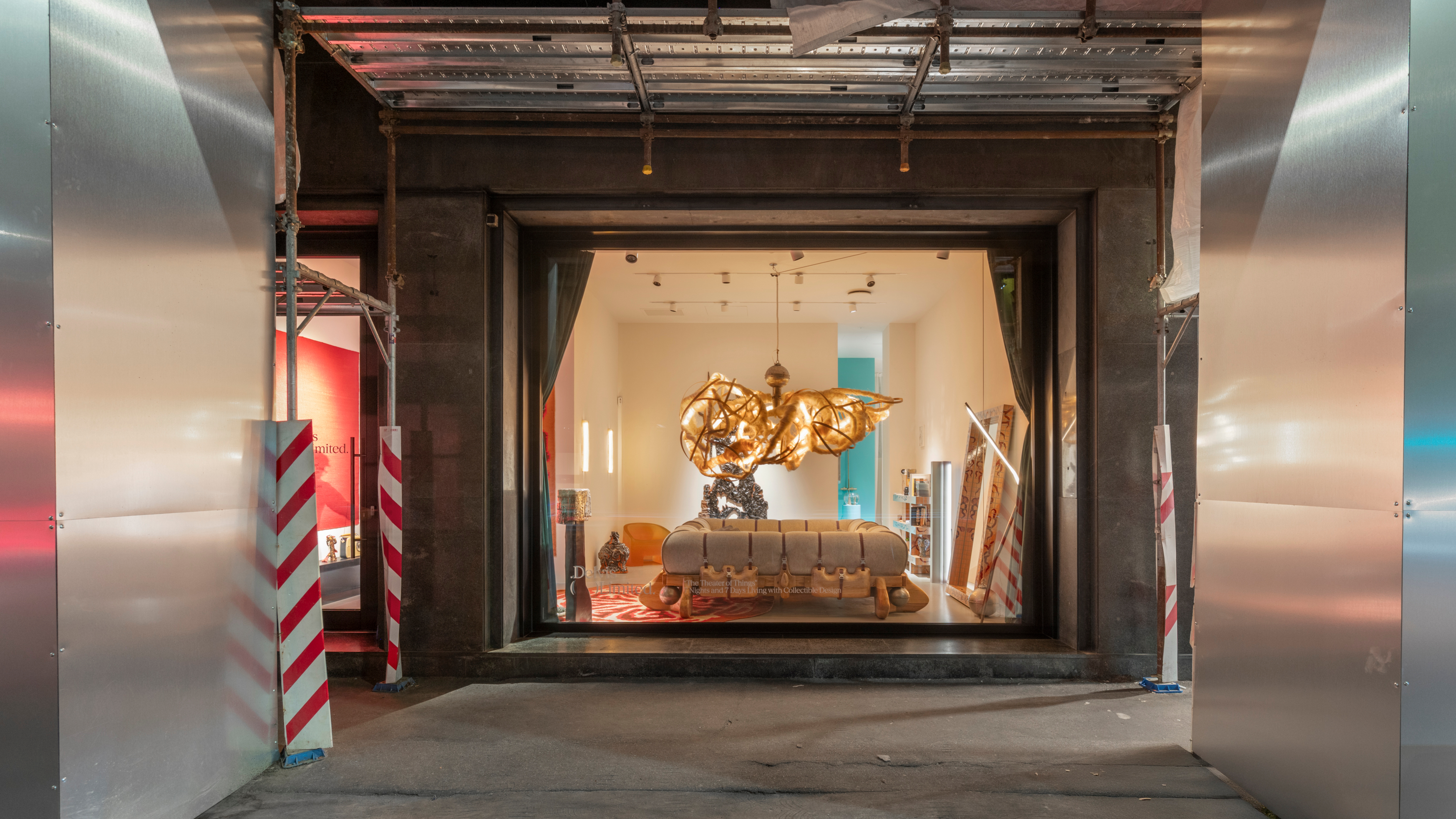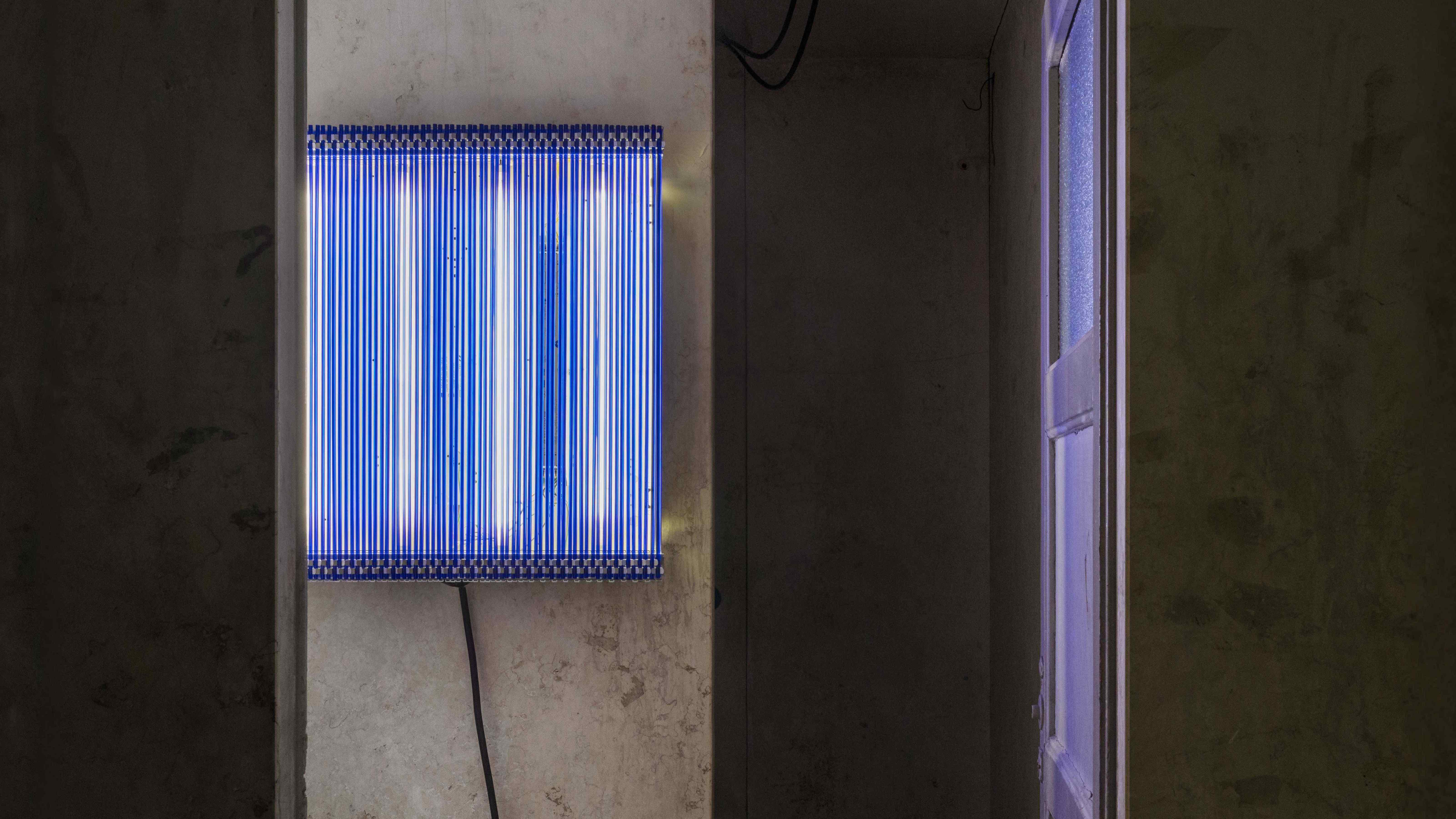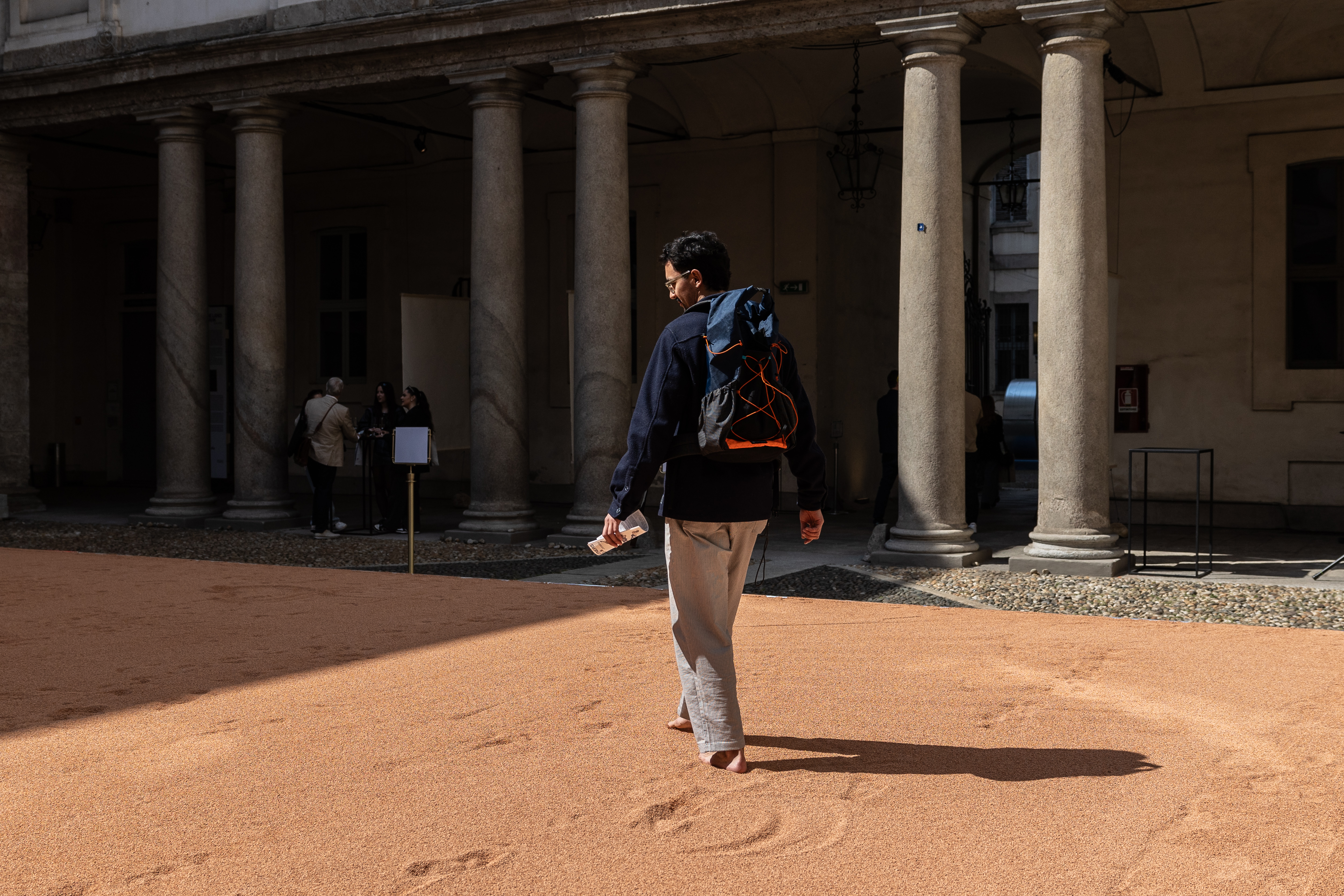In memoriam: Nanda Vigo (1936-2020)
Celebrating the female force of otherworldly design

Nanda Vigo’s work was retro-futuristic – objects, lamps, sculptures and interiors that seem to inhabit the space around them like creatures from another world. The artist and designer, who passed away last week in Milan, has seen particular public recognition in recent years, with awards and solo exhibitions in Russia and Germany, and most recently in Milan last year at Palazzo Reale.
During her lifetime, Vigo’s work was recognised from the early days and at important cultural events such as Venice Biennale and Triennale di Milano. She worked with the likes of Gio Ponti and Lucio Fontana on installations, interiors and environments. Vigo was also associated with Ettore Sottsass and Alessandro Mendini, who was the first to dedicate the front cover of Domus to her work.
Vigo studied architecture at École Polytechnique Fédérale de Lausanne and straight after graduating, while still very young, she moved to the United States – she was drawn in by the idea of studying under Frank Lloyd Wright. Vigo lasted less than a month in his atelier in Taliesin West, before moving on to San Francisco, but found that the design environment there didn’t suit her. Her mindset of the American experience changed in 2014 when her work was exhibited at the Guggenheim in New York as part of the retrospective show on Group Zero. Vigo was a founder and member of the artist group alongside Heinz Mack, Enrico Castellani, Otto Piene, Yayoi Kusama and Piero Manzoni, who was also Vigo’s life partner until his passing in 1963.


Above, Casa Lo Scarabeo Sotto La Foglia (The Beetle Under the Leaf) in Malo. Below, Nanda Vigo’s apartment in Milan. Photography: Adam Štěch
In 1959, Vigo returned to Milan and began a career that thrived on the multidisciplinary nature of the Italian city and the craftsmen and manufacturers in the surrounding area. In 1964, Gio Ponti was commissioned to design the house of an art collector and Vigo designed the interiors in white tiles and fake fur. Known as ‘The beetle under the leaf’, the house located in Malo, Vicenza is still intact.
Many of Vigo’s other pioneering projects that are no longer in existence such as the Zero House, the Blue House, the Yellow House and the Black House – designed between the 1960s and 1970s for clients with a passion for art – were spaces articulated by paintings, reflective surfaces, transparent glass panels and lights. The distinct visual language of Nanda Vigo was characterised by a melding of her obsessions: the domestic space, the refraction of light, the transparency of glass and a sense of suspended reality.
At the age of seven, when she was an avid reader of sci-fi comic books (particularly Flash Gordon), she was strolling through the streets of Como one day and was blown away by the architecture of the Casa del Fascio by Giuseppe Terragni. References to the sunlight piercing through the glass blocks of that building, creating overlapping forms and illusions can be found in some of her most famous works of the 1960s as well as in some of her sculptural lamps, the most recent of which are made with LED lights and pyramid-shaped mirrors.
As an industrial designer Nanda Vigo had a brilliant career working with some companies at the forefront of design such as Kartell, Flou, Glas Italia, Acerbis and Driade. She created iconic pieces with Arredoluce and Conconi such as the first Italian halogen lamp ‘Golden Gate’ and ‘Due più’ the tubular steel chair upholstered in synthetic fur.
Wallpaper* Newsletter
Receive our daily digest of inspiration, escapism and design stories from around the world direct to your inbox.
-
 A stripped-back elegance defines these timeless watch designs
A stripped-back elegance defines these timeless watch designsWatches from Cartier, Van Cleef & Arpels, Rolex and more speak to universal design codes
By Hannah Silver
-
 Postcard from Brussels: a maverick design scene has taken root in the Belgian capital
Postcard from Brussels: a maverick design scene has taken root in the Belgian capitalBrussels has emerged as one of the best places for creatives to live, operate and even sell. Wallpaper* paid a visit during the annual Collectible fair to see how it's coming into its own
By Adrian Madlener
-
 Move over, palazzos. Performances were the biggest trend at Milan Design Week
Move over, palazzos. Performances were the biggest trend at Milan Design WeekThis year, brands brought on the drama via immersive installations across the city
By Dan Howarth
-
 Delvis (Un)Limited turns a Brera shopfront into a live-in design installation
Delvis (Un)Limited turns a Brera shopfront into a live-in design installationWhat happens when collectible design becomes part of a live performance? The Theatre of Things, curated by Joseph Grima and Valentina Ciuffi, invited designers to live with their work – and let the public look in
By Ali Morris
-
 Naoto Fukasawa sparks children’s imaginations with play sculptures
Naoto Fukasawa sparks children’s imaginations with play sculpturesThe Japanese designer creates an intuitive series of bold play sculptures, designed to spark children’s desire to play without thinking
By Danielle Demetriou
-
 Inside the Shakti Design Residency, taking Indian craftsmanship to Alcova 2025
Inside the Shakti Design Residency, taking Indian craftsmanship to Alcova 2025The new initiative pairs emerging talents with some of India’s most prestigious ateliers, resulting in intricately crafted designs, as seen at Alcova 2025 in Milan
By Henrietta Thompson
-
 Faye Toogood comes up roses at Milan Design Week 2025
Faye Toogood comes up roses at Milan Design Week 2025Japanese ceramics specialist Noritake’s design collection blossoms with a bold floral series by Faye Toogood
By Danielle Demetriou
-
 6:AM create a spellbinding Murano glass showcase in Milan’s abandoned public shower stalls
6:AM create a spellbinding Murano glass showcase in Milan’s abandoned public shower stallsWith its first solo exhibition, ‘Two-Fold Silence’, 6:AM unveils an enchanting Murano glass installation beneath Piscina Cozzi
By Ali Morris
-
 Dimoremilano and Loro Piana channel 1970s cinema in decadent Milan display
Dimoremilano and Loro Piana channel 1970s cinema in decadent Milan displayAt Milan Design Week 2025, Dimorestudio has directed and staged an immersive, film-inspired installation to present new furniture and decor for Loro Piana
By Dan Howarth
-
 In Milan, MoscaPartners presents a poetic exploration of ‘migration’
In Milan, MoscaPartners presents a poetic exploration of ‘migration’Alongside immersive work by Byoung Cho, MoscaPartners’ Milan Design Week 2025 display features an accessible exhibition path designed for visually impaired visitors
By Cristina Kiran Piotti
-
 The making of PAN and Nike’s euphoric, club-inspired collaboration at Milan Design Week
The making of PAN and Nike’s euphoric, club-inspired collaboration at Milan Design WeekAlongside a new Air Max 180 release, ‘The Suspended Hour’ display sees Berlin record label PAN imagine the unfolding of a club night, from dusk until dawn
By Craig McLean